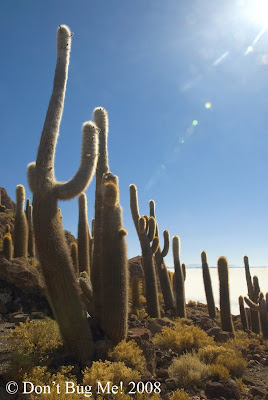 Today, February 12th, someone very important is having a birthday - no, don't worry, you haven't missed my birthday, that is not until March. Besides, my tiny mind and feeble thoughts and ideas haven't changed the world and the way we view and think about nature and life on this planet. No, I am talking about Charles Darwin. Now, I could go off on one of my rants and raves about religion, creationism, intelligent (or should that be stupid?) design, but now is not the time or the place for that. Rather, I just want to celebrate Darwin the naturalist, Darwin the scientist, Darwin the man that changed the world.
Today, February 12th, someone very important is having a birthday - no, don't worry, you haven't missed my birthday, that is not until March. Besides, my tiny mind and feeble thoughts and ideas haven't changed the world and the way we view and think about nature and life on this planet. No, I am talking about Charles Darwin. Now, I could go off on one of my rants and raves about religion, creationism, intelligent (or should that be stupid?) design, but now is not the time or the place for that. Rather, I just want to celebrate Darwin the naturalist, Darwin the scientist, Darwin the man that changed the world.
I have been doing a lot of reading about Darwin and the Voyage of the Beagle recently, mainly because I am supposed to be putting on a photo exhibit and saying something vaguely intelligent about the man for my university's Darwin Celebrations. And the thing that struck me the most about the man was his incredible powers of observation. Me, I see a rock and I think "oh, a rock." Or I see a some red algae floating in the water and I think "Eeeuuww, the water is all scummy." Darwin, on the other hand, would have scooped some of that water up, slapped it under a microscope and written a page of detailed notes about its size, shape, structure, colour, locomotory abilities, reproductive organs etc. etc. And he did this with everything. His breadth of interest and knowledge was astounding, ranging from botany and entomology to palaeontology and geography, from population studies and domestic livestock breeding to reptiles and volcanoes. He wrote whole books on beetles and barnacles. He was fascinated by orchids. He knew all about breeding pigeons. He was passionate about geology. Was there anything that did not interest this man?
So, Mr Darwin was incredibly observant, knowledgeable and well read. But that doesn't change the course of history, does it? So, what did he do that was so remarkable? Well, what he managed to do that no one had done before, was to take all his observations, thoughts and ideas along with many other people's, and bring them all together into one grand idea - the Theory of Natural Selection. Let's have a quick look at some of the evidence that contributed to this stunningly simple and yet all powerful theory.
- While in the Andean mountains, he noticed that marine fossils could be found in places at an altitude of over 3000m. How on earth could that be so? This is where Darwin pulled a scientific rabbit out of the hat and suggested, God forbid, that maybe, given enough time, movement of the Earth's crust, sedimentation and other geological activities could result in this observation. This, of course, was anathema to God fearing Christians of the time (including Darwin himself), since everyone knew that the world was only a few thousand years old.

 On fossil hunting expeditions, Darwin discovered many fossils from animals that no longer exist but appeared closely related to animals alive today. For example, the giant sloths and rheas of South America. Why would God keep changing the flora and fauna of the planet? Darwin went as far as stating that "There is no fact in the history of the world that is so startling as the wide and repeated extinctions of its inhabitants." In fact, over 90% of all living organisms that have once lived on Earth are now extinct.
On fossil hunting expeditions, Darwin discovered many fossils from animals that no longer exist but appeared closely related to animals alive today. For example, the giant sloths and rheas of South America. Why would God keep changing the flora and fauna of the planet? Darwin went as far as stating that "There is no fact in the history of the world that is so startling as the wide and repeated extinctions of its inhabitants." In fact, over 90% of all living organisms that have once lived on Earth are now extinct.  While eating a rhea in Southern Patagonia, Darwin noted that it was smaller and slightly different from the rheas further north. Why would God put two slightly different animals right next to each other?
While eating a rhea in Southern Patagonia, Darwin noted that it was smaller and slightly different from the rheas further north. Why would God put two slightly different animals right next to each other?- On the Galapagos, he noticed that the mockingbirds were slightly different on different island and that each island had its own unique mockingbird. No, people, it was not the finches, it was the mockingbirds! Darwin only later realised that the finches showed the same pattern. Given the difficulty of a bird arriving at such a far flung place, he concluded that a parent species arrived and that mockingbirds on different islands changed over time to better suit their habitat. He realised this was quite a radical thought, saying "If there is the slightest foundation for these remarks such facts would undermine the stability of a species." This was explosive stuff at the time. Remember, everyone took it for granted that God created the Earth and all the creatures on it in less than seven days.

- Once Darwin arrived back home, he could witness with his own eyes how humans could bring about change in living creatures by looking at all the different domestic dog breeds, cattle, pigeons, crops etc.
- Another key piece of information used by Darwin was the essay written by Malthus on human populations. Malthus stated that human populations would grow exponentially until resources started to run out. At that point, more babies would be born than could survive and competition would begin. The strong would survive and the weak would die. Darwin then applied this to nature, stating that if there is a struggle for existence and a competition for resources, the individuals that competed the best would survive and pass their successful traits on to their young, so increasing their chance of survival.
And so Darwin finally put it all together. Species can and do change. This is evolution. This was not a new idea, but Darwin was the first to suggest a mechanism for such change. Small variations among offspring and competition for resources. Those that were favoured passed their traits on to their offspring and those that failed did not. And the crowning glory of this idea - the notion that it could take place over a very, very long time. Not hundreds, not thousands, but millions, even billions of years. And anything is possible, given enough time. Mountains can be raised thousands of meters into the sky or eroded down to nothing, given enough time. A patch of light sensitive cells can evolve into the remarkable viewing apparatus that we call an eye, given enough time. And none of this need any intervention by God. Random mutations, leading to random changes, moulded by the selective forces of nature will do the job just fine.
So, there we have it, Darwin's Theory of Evolution by Natural Selection. It took him over 20 years to gather his evidence and a lot of pressure from friends, relatives and fellow scientists to publish it. He knew the debate and the antagonism that it would stir up within the scientific community and with the Church. When he did finally publish "On the Origin of Species by Means of Natural Selection", he was right. Much debate, anger and arguments ensued and such debates still continue to this day. But no matter what your views are on God, Creation and Evolution, no one can argue that Darwin was one of the greatest scientists that the world has ever seen and that his theory has changed the world. Oh dear, this was supposed to be a short post! I guess I got carried away. I shall finish with one more very famous quote:
Oh dear, this was supposed to be a short post! I guess I got carried away. I shall finish with one more very famous quote:
"Nothing in Biology Makes Sense Except in the Light of Evolution" Theodosius Dobzhansky , 1973
and by saying Happy Birthday Charles! 200 years and still kicking!
 Anyone else like to take up the challenge?
Anyone else like to take up the challenge?



















